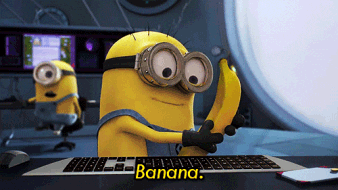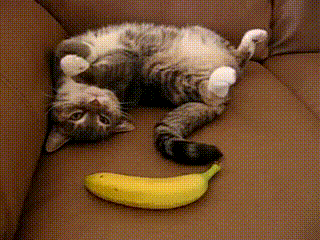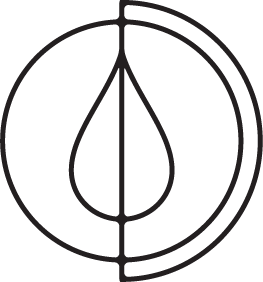How sustainable are bananas?

This post first appeared in our weekly Make Waves Mondays email series on October 23, 2023.
Okay friend. Buckle up because today’s gonna be a fun one.
The other day, a friend of mine purchased a bunch of bananas, and another friend looked at them and said, “You know you can just buy one banana for yourself, right?”
To which the first friend said, “Yeah, but I’d feel weird just buying a single banana.”
Which, surprise surprise, got me off on a whole tangent about banana sustainability, leaving everyone in the room staring at me like some kinda banana fiend.
I mean, once ya get to know me this story is highly unsurprising, but these are new friends so they don’t fully “get” me yet 😅
But at the end of the whole debacle, I thought to myself, “Man, this would make an AWESOME blog post!”
So here we are.
It’s Thursday.
And I’m about to hit ya with some ‘nana trivia you never saw coming.
And it. will. be. GLORIOUS.
And once it’s all said and done, do me a favor and comment below to let me know what you thought of this maybe-a-little-left-field post all about the lowly banana 🍌
So let’s do this thing!

#DidYouKnow… Single bananas are more likely to end up in a landfill?
It’s true!
Most people are like my friend that sparked this whole topic idea - they feel weird buying just one banana.
Most people, when they purchase bananas, purchase a whole bunch of them.
Rarely do people purchase just one banana.
But that means that grocery stores end up with a surplus of single bananas left on the shelves that no one wants to take home.
And, as we all know, bananas (and nearly all other fresh produce) don’t last all that long after they’ve been plucked from their happy little trees.
So all of those single bananas not getting picked from the grocery store lineup are more likely to go bad and get tossed into a dumpster behind the grocery store.
Yes, ideally they’d be composted, but let’s be real - there’s a good chance they’re not and even if they were, think about all of the time, energy, and resources that went into growing, harvesting, and transporting that banana to get to that shelf in the first place! Do we really just wanna toss it in the compost just because it’s lonely?? I think not.
I’ve seen articles that suggest lonely bananas are actually 60% more likely to be thrown away than bananas that have friends 😱
So if you wanna make more zero waste choices at the grocery store, start with the lonely bananas! Grab five single bananas instead of one bunch of five bananas and save those single yellow fruits from an unfortunate demise.

“Are bananas at risk of going extinct or something?”
Logically, after my dissertation on lonely bananas ended and my new friends all thought I’d lost a marble or two, one of them chuckled.
“Are bananas at risk of going extinct or something?” he asked.
“Well, actually…” I began…
✨ Little pro-tip if you meet me in the wild, don’t ask a sustainability-related question you’re not prepared for a whooooooooole answer on.
So let’s talk about bananas here in the United States.
Allow me to introduce to you…the Cavendish banana.
Nearly every single banana that we consume here in the States is a Cavendish banana. It’s been that way since the 1960s.
But it’s not just that you’re eating Cavendish bananas.
It’s that you’re essentially eating the same Cavendish banana every time you eat a banana.
You see, banana plants reproduce asexually.
So to grow a new banana plant, you just stick a piece of the old banana plant in the ground.
This means that every Cavendish banana is essentially a clone of itself.
That’s why there’s so little variation in banana shape, size, and taste.
The Cavendish banana is consistent, it’s got a thick peel so it ships easily, and they’re resistant to a strain of Panama disease that wiped out the previous mass-produced banana (the Gros Michel banana).
Sounds like a great solution, right?
Well maybe not.
(Ignoring the fact that Cavendish bananas are ~objectively~ the worst-tasting bananas on the planet…)
Because all of these bananas are clones of each other, they have no genetic diversity that can protect the species as a whole from devastation if and when a disease outbreak occurs.
One single contaminated boot on a banana plantation can wipe out the whole plantation, simply because if one banana is susceptible to that disease, then every single other banana is susceptible to that disease.
(And because we plant bananas as monocrops, which further eliminates any diversity that may prevent disease spread. But monocrops are a conversation for another day.)
And we’re seeing this play out right now.
There’s a new disease in the world threatening the fate of our beloved Cavendish - Tropical Race 4 - and it’s actually very similar to Panama disease.
So while the Cavendish banana may not be at risk of going “completely” extinct (the Gros Michel banana technically still exists in the world), it is at risk of going commercially extinct, meaning it may still exist but it won’t be available for mass production and distribution.
Leaving us…bananaless.

Should we stop eating bananas?
In short… nah.
According to the book How Bad Are Bananas? The Carbon Footprint of Everything by Mike Berners-Lee (a fabulous book to keep on hand if you’re an eco-nerd like myself):
“Bananas are a great food for anyone who cares about their carbon footprint. For just 80g of carbon, you get a whole lot of nutrition: 140 calories as well as stacks of vitamin C, vitamin B6, potassium, and dietary fiber. … There are three main reasons that bananas have such low carbon footprints compared with the nourishment they provide:
- They are grown in natural sunlight - no hot-housing required.
- They keep well, so although they are often grown thousands of miles from the end consumer, they are transported by boats (about 1% as bad as flying).
- There is hardly any packaging, if any, because they provide their own.”
HOWEVER.
Bananas go to waste more than any other food. We throw away about 5 million of them every year.
Too green.
Too many spots.
Too lonely.
So while bananas aren’t actually all that bad from a sustainability standpoint, they’re pretty dang bad from a waste standpoint.
So if you're someone who goes bananas for bananas at the grocery store…
- Take home the single bananas.
- Eat all of the bananas you buy.
- If you can’t eat all of the bananas you buy, put them in the freezer and make some banana bread, banana nice cream, or banana smoothies.

And friend, that’s all I’ve got for ya today on this week’s post! Please do let me know how you liked this one, ‘cause I had a whole lot of fun putting it together and would love to know if you feel the same on the other end! Drop a comment and let me know! 💛🍌
Related:
Palm Oil: What is it, why is it a problem, and can it be sustainable?
The Sustainability of Wine vs. Beer
What's the environmental impact of one pound of meat?
Zero Waste Kitchen blog posts









I’ve been buying single bananas since I read this and it feels great knowing something so simple as WHICH bananas I pick can make a big difference in the long run!
Leave a comment